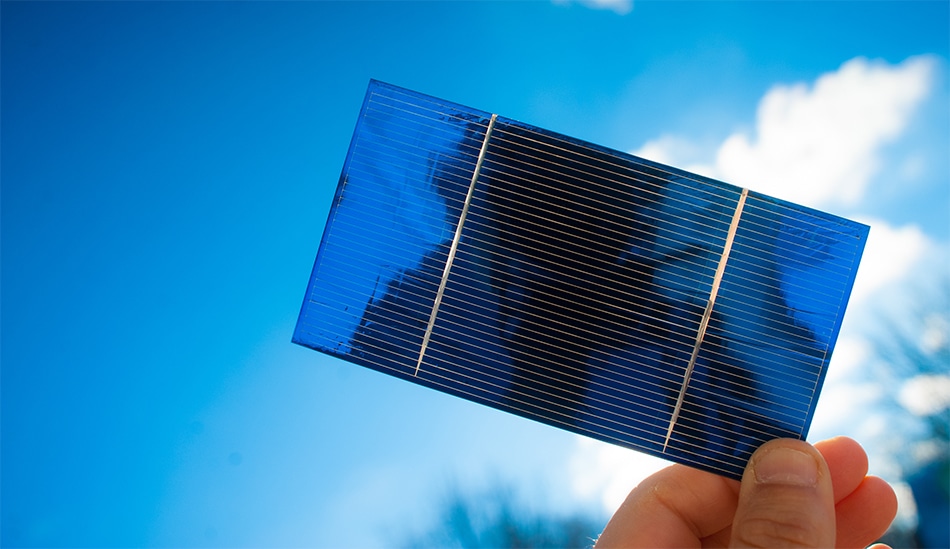
Perovskite is a new and promising material in terms of solar cell development, and devices using these compounds have already dramatically increased in efficiency, from a mere 3.8% in 2009 to an impressive 22.1% in early 2016.
But it suffers a major problem: in its regular form it is very sensitive moisture, so much so that it dissolves when it comes into contact with water. Even normal humidity leads to perovskite - named after Russian mineralogist Lev Perovski - deteriorating within a matter of minutes or hours.
Researchers from Lund University in Sweden and Fudan Univesity in China believe they have overcome this problem, building thin sheets of perovskite that not only repel water, but allow the free movement of electrons between sheets. Furthermore, the sheets appear to self-organise and stand on their edge, increasing the efficiency of the solar cell.
“We have succeeded in producing thin sheets with a water-repelling surface, making the whole construction much more stable. In addition, we have succeeded in orienting the sheets so as to obtain acceptable solar cells, with an efficiency of ten per cent”, says Tönu Pullerits, professor of chemical physics at Lund University.
A perovskite is any material with the same type of crystal structure as calcium titanate or CaTiO3. With a general formula of ABX3 - known as the perovskite structure – perovskites consist of two different sized cations, A and B, and an anion, X, which bonds to both in a cuboctahedral coordination. Solar cells made using perovskite feature a perovskite-structured compound, often a hybrid organic-inorganic lead or tin halide-based material, as the light-harvesting active layer. Perovskite-based solar cells are cheap to produce and simple to manufacture.
The perovskite sheets developed by the researchers used (iso-BA)2(MA)3Pb4I13 and are so thin that it is necessary to layer several on top of each other to allow for the absorption of sunlight to be sufficient. However, water-repelling surfaces do not normally allow for the free circulation of electrons, making it difficult for electrons to jump from one sheet to another thus reducing the efficiency of the solar cell.
The researchers first tested two different water-repelling surfaces; they expected one version to give better results as electrons jumped more easily from one sheet to another. But, their hypothesis was incorrect – their second version gave much better results. This surprised the researchers, who conducted more experiments to find out why. Their results suggest that – in a surprising turn of events – that the structure of the sheets was self-organising and stood on their edge.
“Here, our laser experiments were crucial. We could show that the sheets with the second surface material self-organised in such a way as to stand on edge instead of lying flat against one another”, says Pullerits.
This means that electrons were able to move freely between the contacts, increasing the efficiency of converting solar energy to electricity.
Pullerits believes this research, published in Advanced Energy Materials, is an important step on the way to constructing stable and efficient solar cells from perovskite, adding that: “Stability is a key issue for solar cells”. The stability of perovskite solar cells can be influenced by many factors other than moisture, including oxygen, thermal influences, heating under applied voltages, and the influence of UV light.
Despite there being no standard stability protocol, scientists have great hopes for perovskite solar cells. They believe there is the potential for perovskite solar cells to reach much higher efficiencies: when combined with the fact that they have very low production cost, they are commercially very attractive. Indeed many start-up companies are promising perovskite solar modules on the market sometime in 2017.
Disclaimer: The views expressed here are those of the author expressed in their private capacity and do not necessarily represent the views of AZoM.com Limited T/A AZoNetwork the owner and operator of this website. This disclaimer forms part of the Terms and conditions of use of this website.